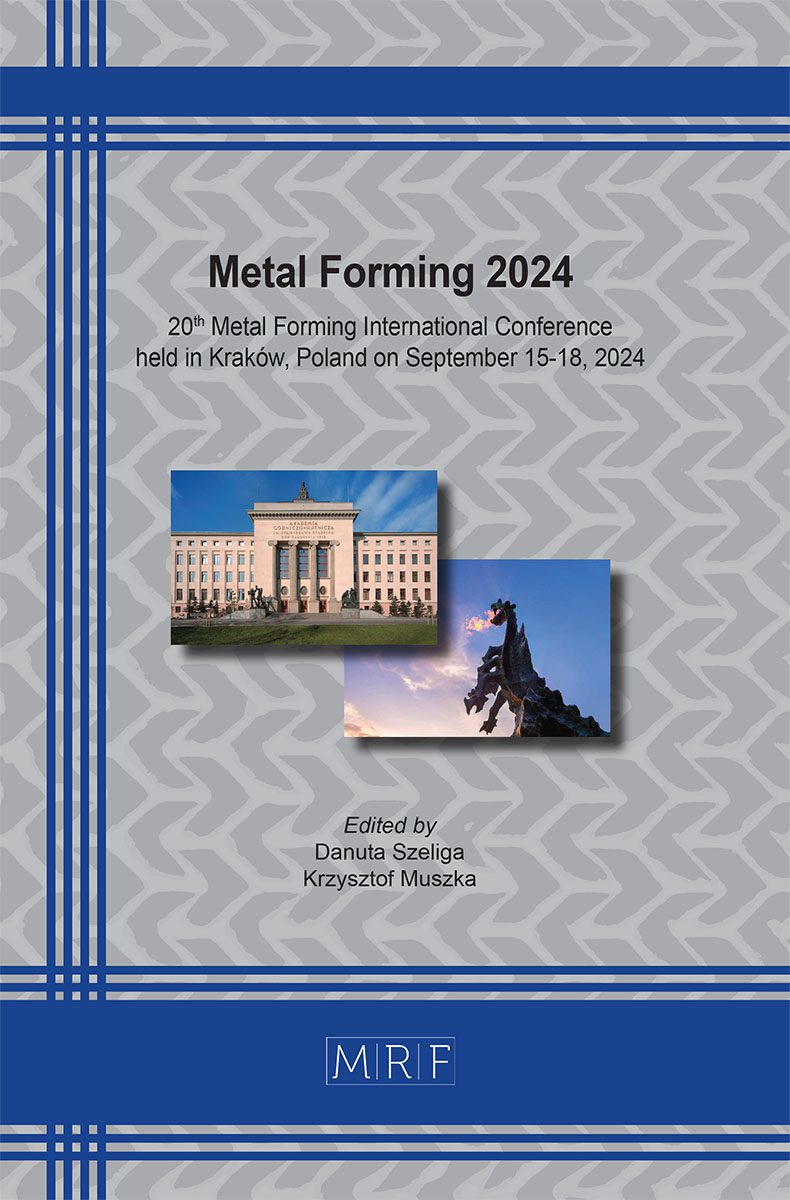–
Influence of particle characteristics on mechanical properties of particle reinforced tungsten alloys
XIAO Fangnao, CHENG Gang, BARRIERE Thierry
download PDFAbstract. The manufacturing processing and the mechanical properties of particle reinforced metal matrix composites are strongly dependent on their microstructural characteristics. In this research, 3D models in microscale of tungsten alloys reinforced by Zr(Y)O2 particles (W-Zr(Y)O2) were established to investigate their uniaxial compression deformation behaviours. The effects of particles contents, size and their distribution on the compressive properties of W-Zr(Y)O2 alloy were discussed. The mechanical behaviours of the reinforced W alloys were improved by increasing the content of Zr(Y)O2 particles. With the same particles content, the strength of the reinforced alloys increased with smaller size particles. With the same particle size and content, the stress concentration was reduced with more homogeneous distribution of the reinforced particles. The predicted strengths with 3D models are compared with the experiment data, which exhibits high prediction accuracy.
Keywords
Tungsten Alloy, Oxide Particle Strengthening, Microscale Simulation
Published online 9/15/2024, 7 pages
Copyright © 2024 by the author(s)
Published under license by Materials Research Forum LLC., Millersville PA, USA
Citation: XIAO Fangnao, CHENG Gang, BARRIERE Thierry, Influence of particle characteristics on mechanical properties of particle reinforced tungsten alloys, Materials Research Proceedings, Vol. 44, pp 381-387, 2024
DOI: https://doi.org/10.21741/9781644903254-41
The article was published as article 41 of the book Metal Forming 2024
![]() Content from this work may be used under the terms of the Creative Commons Attribution 3.0 license. Any further distribution of this work must maintain attribution to the author(s) and the title of the work, journal citation and DOI.
Content from this work may be used under the terms of the Creative Commons Attribution 3.0 license. Any further distribution of this work must maintain attribution to the author(s) and the title of the work, journal citation and DOI.
References
[1] S. Ma, X. Zhuang, X. Wang, Particle distribution-dependent micromechanical simulation on mechanical properties and damage behaviors of particle reinforced metal matrix composites, J. Mater. Sci. 56 (2021) 6780-6798. https://doi.org/10.1007/s10853-020-05684-2
[2] M. Saravana Kumar, C.I. Pruncu, P. Harikrishnan, S.R. Begum, M. Vasumathi, Experimental investigation of in-homogeneity in particle distribution during the processing of metal matrix composites, Silicon 14 (2022) 629-641. https://doi.org/10.1007/s12633-020-00886-4
[3] J. Geng, Y. Li, F. Wang, C. Zhang, D. Chen, M. Wang, H. Wang, Revealing the complex effects of particle bands on fatigue crack growth in an extruded aluminium matrix composite, Int. J. Fatigue 157 (2022) 106720. https://doi.org/10.1016/j.ijfatigue.2022.106720
[4] R. Kocich, L. Kunčická, D. Dohnalík, A. Macháčková, M. Šofer, Cold rotary swaging of a tungsten heavy alloy: Numerical and experimental investigations, Int. J. Refract. Metal. Hard Mater. 61 (2016) 264-272. https://doi.org/10.1016/j.ijrmhm.2016.10.005
[5] F. Zhang, Y. Huang, K.C. Hwang, S. Qu, C. Liu, A three-dimensional strain gradient plasticity analysis of particle size effect in composite materials, Mater. Manuf. Process. 22 (2007) 140-148. https://doi.org/10.1080/10426910601062032
[6] J. Zahr Viñuela, J.L. Pérez Castellanos, Elastic constants and isotropy considerations for particulate metal-matrix composites. A multi-particle, cell-based approach, Compos. Part A: Applied Sci. Manuf. 42 (2011) 521-533. https://doi.org/10.1016/j.compositesa.2011.01.011
[7] J.F. Zhang, X.X. Zhang, Q.Z. Wang, B.L. Xiao, Z.Y. Ma, Simulation of anisotropic load transfer and stress distribution in sicp/Al composites subjected to tensile loading, Mech. Mater. 122 (2018) 96-103. https://doi.org/10.1016/j.mechmat.2018.04.011
[8] A. Abedini, C. Butcher, Z.T. Chen, Numerical simulation of the influence of particle clustering on tensile behavior of particle-reinforced composites, Computat. Mater. Sci. 73 (2013) 15-23. https://doi.org/10.1016/j.commatsci.2013.02.021
[9] Y. Su, Q. Ouyang, W. Zhang, Z. Li, Q. Guo, G. Fan, D. Zhang, Composite structure modeling and mechanical behavior of particle reinforced metal matrix composites, Mater. Sci. Eng. A 597 (2014) 359-369. https://doi.org/10.1016/j.msea.2014.01.024
[10] Z. Yang, W. Ren, R. Sharma, S. McDonald, M. Mostafavi, Y. Vertyagina, T.J. Marrow, In-situ X-ray computed tomography characterisation of 3D fracture evolution and image-based numerical homogenisation of concrete, Cement and Concrete Composites 75 (2017) 74-83. https://doi.org/10.1016/j.cemconcomp.2016.10.001
[11] J.J. Williams, J. Segurado, J. LLorca, N. Chawla, Three dimensional (3D) microstructure-based modeling of interfacial decohesion in particle reinforced metal matrix composites, Mater. Sci. Eng. A 557 (2012) 113-118. https://doi.org/10.1016/j.msea.2012.05.108
[12] C.-W. Nan, D.R. Clarke, The influence of particle size and particle fracture on the elastic/plastic deformation of metal matrix composites, Acta Mater. 44 (1996) 3801-3811. https://doi.org/10.1016/1359-6454(96)00008-0
[13] F. Xiao, Q. Miao, S. Wei, T. Barriere, G. Cheng, S. Zuo, L. Xu, Uniform nanosized oxide particles dispersion strengthened tungsten alloy fabricated involving hydrothermal method and hot isostatic pressing, J. Alloy. Compd. 824 (2020) 153894. https://doi.org/10.1016/j.jallcom.2020.153894












